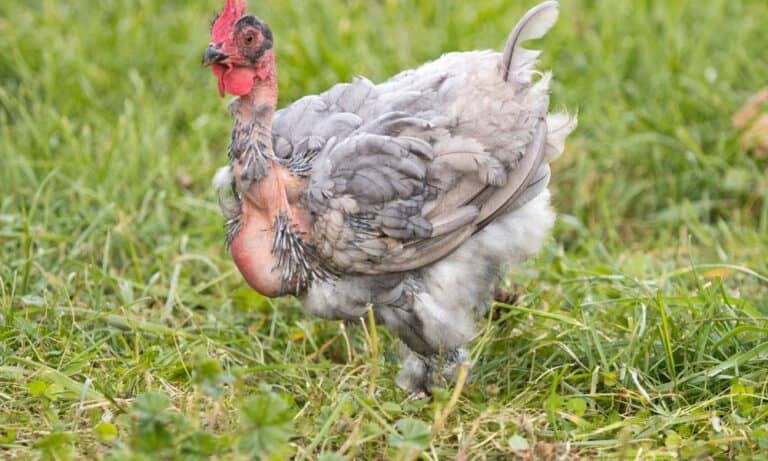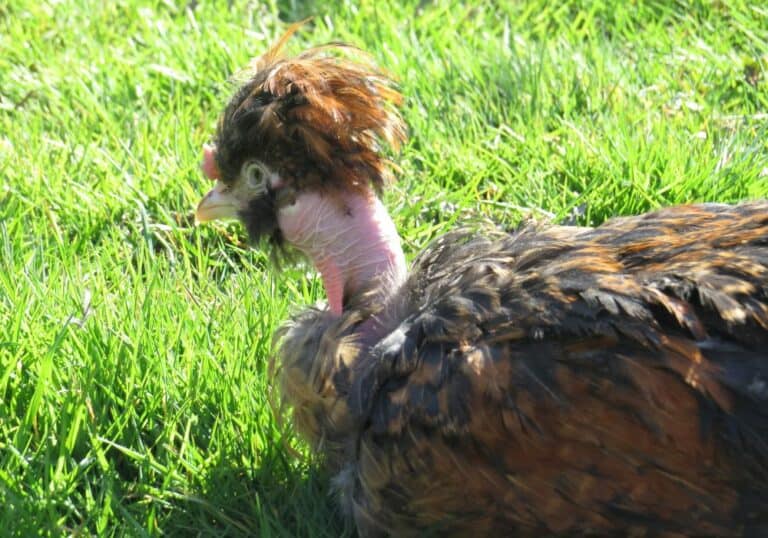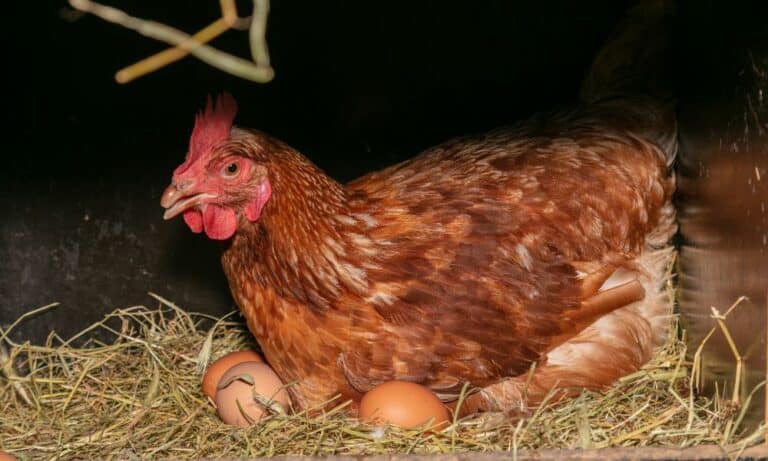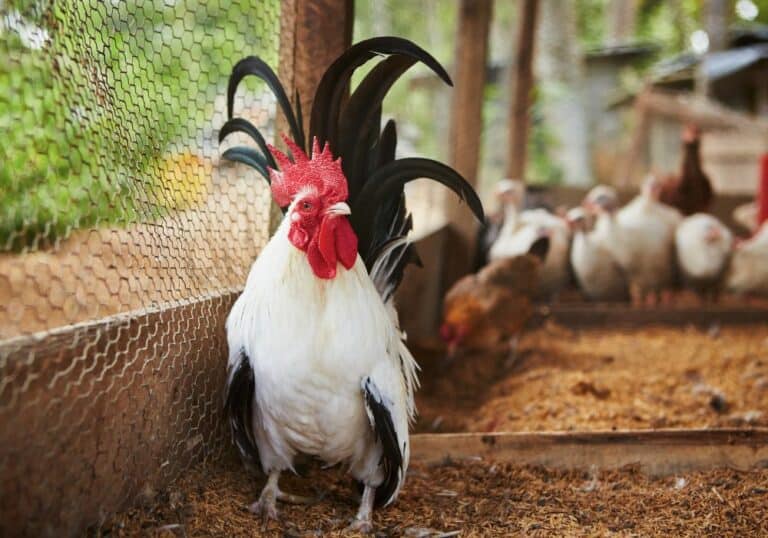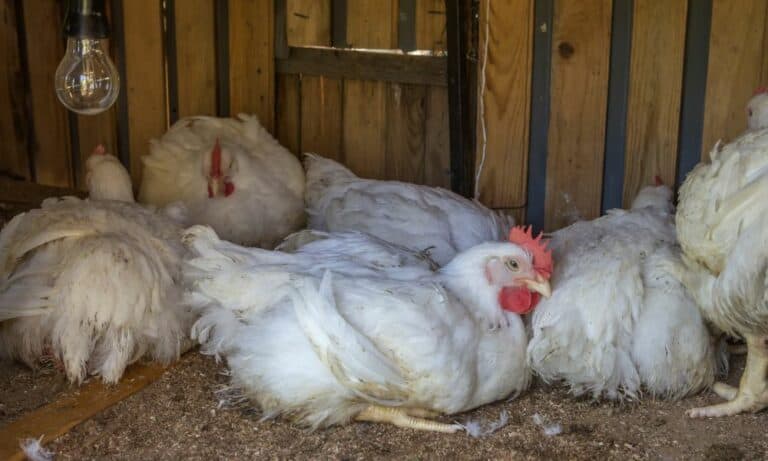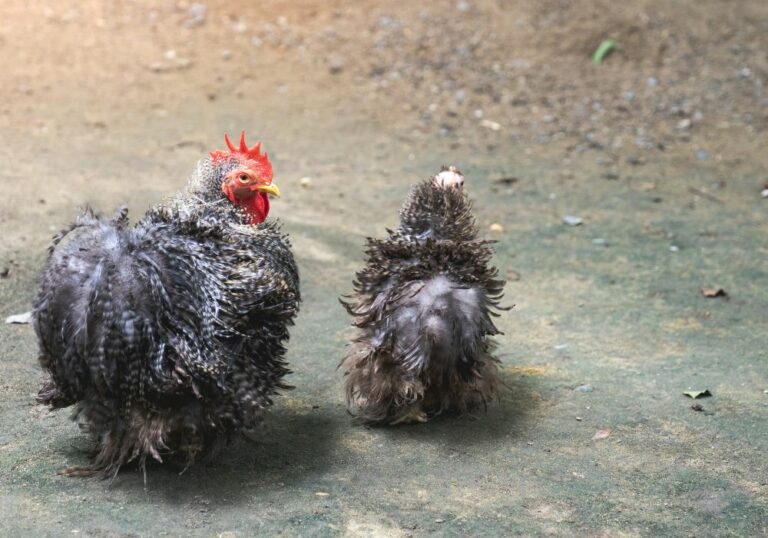The Barred Rock chicken is one of the most beautiful in the world. It’s no wonder so many people want these stunning creatures in their coops. But more than just having beautiful feathers, this bird is known as an incredible dual-purpose chicken.
A color variant of the infamous Plymouth Rock, these chickens are ideal for backyard enthusiasts looking for perfect purebred poultry. In our complete guide, we give you all the information you need. So, let’s get started!
History and Origin of Barred Rock Chicken
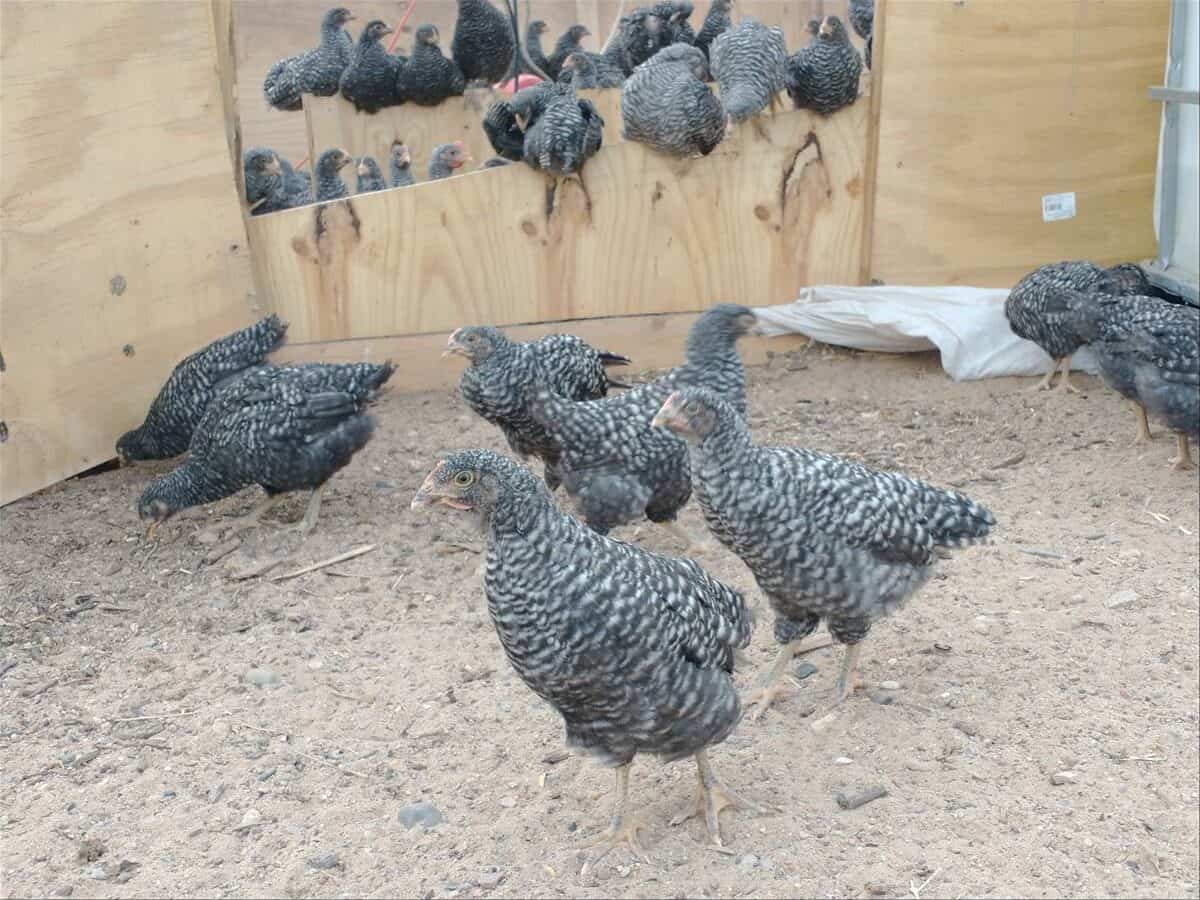
Firstly, let’s answer a question many people have. Is Barred Rock the same as Plymouth Rock? The answer is yes. The Barred Rock is just one of the many colors you can get from Plymouth Rock. Other colors include buff, blue, and white.
So why does Barred Rock get special attention? It’s simply to do with its spectacular coloring. The bands of black and white on its feathers give it a more distinctive appearance than most other chickens out there.
The Plymouth Rock is one of the most historic chicken breeds in the United States. Dating back to the 1800s, it has a rich history and became immensely popular for both its meat and egg production.
It’s particularly noted for being important for the war effort in World War II. At the time food was in short supply and the Plymouth Rock was a vital part of keeping the country fed. These days, the birds are still popular as meat and egg producers, but they also work well as a friendly pet.
Physical Characteristics of Barred Rock Chicken

As stated, these birds are just a color variant of the Plymouth Rock. They have a strong triangular-shaped body which gives them plenty of meat across their wide breast. That is also aided by the overall large size, as even the hens can often weigh 7.5 lbs.
The chicks come out as soft and fluffy but not in the bright yellow that most people commonly associate with chicks. Instead, the Barred Rock is born with black feathers but may have small patches of yellow along with it.
Once they grow, they will have deep and vibrant red comb along with a red face. Their beak, eyes, and feet will all be a yellowish-orange color.
And, of course, their most distinctive feature is their feathers. The barred black and white strips are not just loved because of their attractive appearance, but because they are not really seen on any other chicken. It’s no surprise they are so popular.
Uses of a Barred Rock Chicken
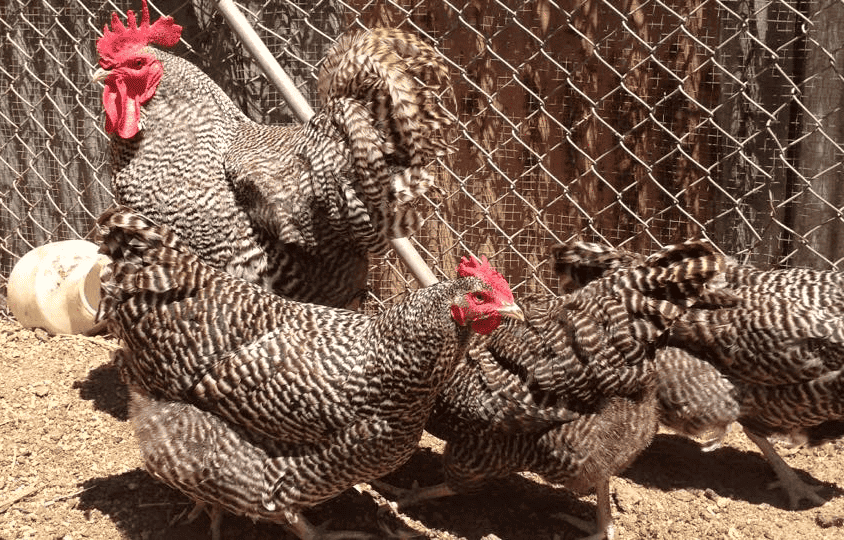
The Barred Rock is a great chicken but aside from its striking appearance, why do people love keeping them so much? Here we’ll take a deeper look.
Meat
The Barred Plymouth Rock is a brilliant dual-purpose chicken. If you’re looking to become more sustainable, then it’s a great idea to keep them in your backyard. They produce good quality meat that will provide excellent meals.
Not all chicken meat is tasty and tender but the Plymouth Rock is. Not only that but as they are large birds, they will provide plenty of meat. Note, these chickens are usually killed for their meat around two to three months old.
If you are hoping to raise a small coop, then they are ideal. You can use the roosters for meat and use the hens for their eggs laying. As they are purebred chickens, you can breed them easily without any issues.
Eggs
Along with being used for meat, the Barred Rock is also an excellent layer. Not many breeds of chickens are equally good for their meat and eggs, which is why so many people keep this special chicken.
They will usually lay around 200 eggs per year but some may be higher than that. That works out to be around 4 per week. However, if you only wanted a chicken for egg laying, then you may wish to look for a hybrid species that has been bred specifically for laying.
As a comparison, a Golden Comet or an ISA Brown will produce nearly one egg per day. However, you can’t breed these chickens as they are hybrids, and they aren’t as good for meat production.
So while the Barred Rock is seen as a good layer for a domestic breed of chicken, they aren’t as productive as hybrids. That being said, there are a few other reasons why the Barred Rock is seen as a good layer.
These chickens can lay eggs consistently for three years, but after that, their production rate will drop off. While production slows, they can often still produce eggs up to 10 years of age. To put that into context, the Golden Comet that we mentioned above only has a lifespan of up to five years.
Broodiness in chickens means that a hen has strong maternal instincts and wants to sit on her eggs. The Barred Rock can be broody but not as much as other breeds. They can get aggressive if their eggs are taken but are usually friendly.
Egg Production
- Eggs per Year: 200
- Eggs per Week: 4
- Size: Large
- Color: Brown
Pets
The Barred Rock is usually a good pet for a few different reasons. The most important is they are friendly and docile. If you want a backyard coop and have small children, then you’ll be happy to know that they’ll get along.
This includes being handled, as they will often eat out of the hand and don’t mind being picked up. While they have a kind nature, some young children may be a little apprehensive as these are large chickens.
Perhaps a negative when it comes to a backyard coop is due to that size. They require a lot of space so if you don’t have a large backyard, they may not be ideal. You most likely need at least 10 square feet per bird.
But let’s end on a positive, which is their lifespan. It’s longer than many other chickens with many surviving up to 12 years old. The life for some will be a little shorter than that, with the range generally being 8 to 12 years.
Feeding and Housing Barred Rock Chickens
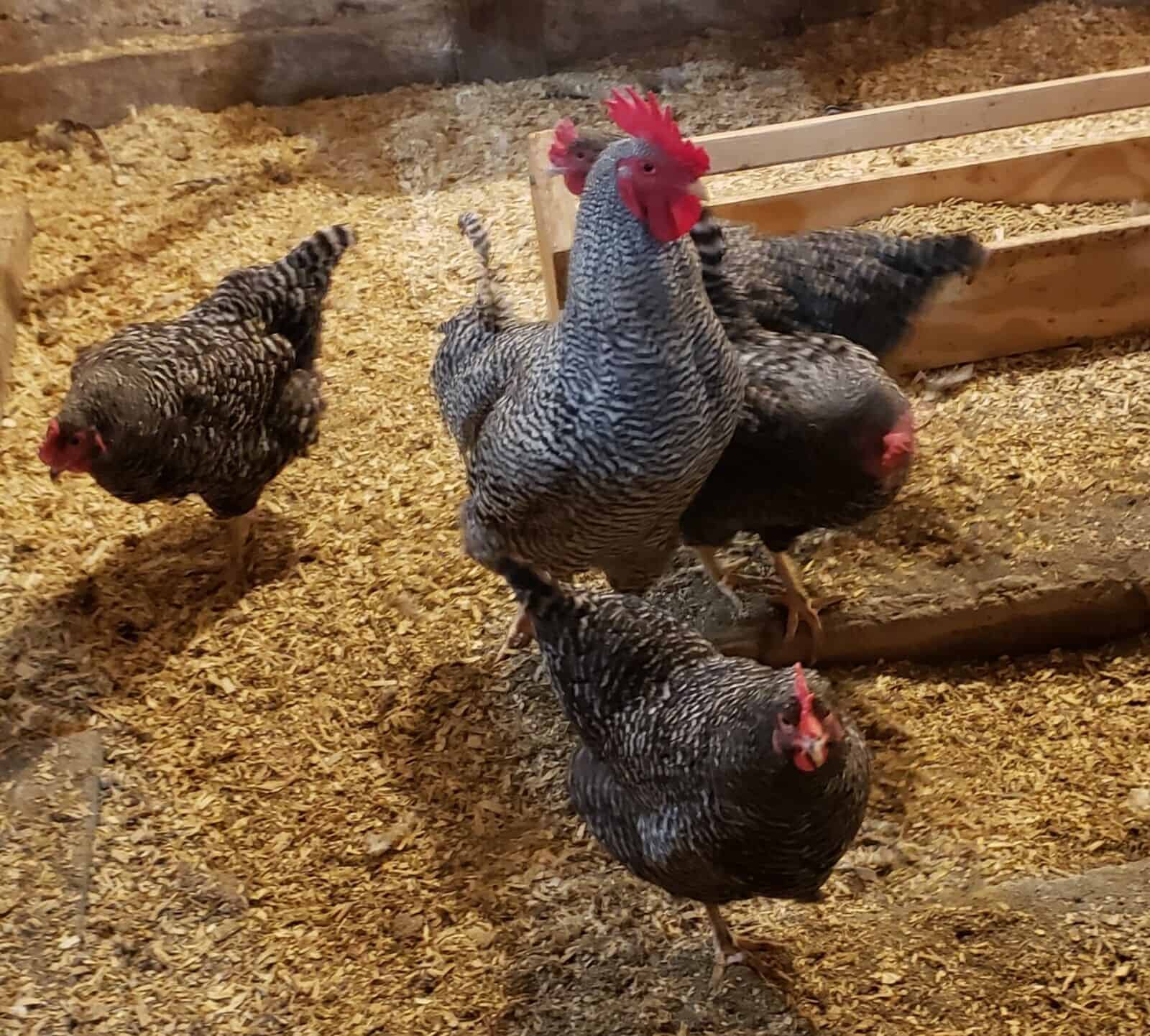
A breed of chicken doesn’t last this long unless they are easy to keep! Barred Rocks do extremely well in the cold, so you don’t need to worry about them surviving during freezing winters. However, their wattles and combs can get frostbitten, so it’s a good idea to keep an eye on that during cold spells.
You may even want to add a heater, but this isn’t always needed. However, heaters can have the dual purpose of aiding in winter egg production.
As for hot summer days, the Barred Rock doesn’t cope quite as well. During heatwaves, you’ll want to ensure they have access to shade and cold water. Now we know how they survive in bad weather, let’s see how easy they are to house and feed.
Coop
As mentioned in our pet section, these birds need a lot of space. Ten square feet per bird should be the standard. As these chickens should be kept in a flock, you should have a bare minimum of three Barred Rocks, but ideally five or more.
With five Barred Rocks, that would mean a required coop space of 50 square feet in total. Unless you have that space available, it’s best to look for a smaller breed. However, if you have abundant space, then treat them to a beautiful big chicken house!
If you’re keeping a large number of chickens and including a rooster, then you should have a ratio of at least ten hens to every rooster. For example, if you had two roosters and six hens, there would be a lot of aggressive behavior.
Along with coop space, you’ll also want to give them room to roam around. They are inquisitive birds and will be happy to find their own food during the day. When the darkness rolls around, secure them back in the coop to protect them from predators.
Feeding
As with most chickens, feeding Barred Rock chickens is quite easy. Chicks should be fed with high-protein feed due to their rapid growth. Adults won’t need quite as much protein, but you’ll still want plenty in their diet.
If you are letting them forage, then Barred Rock can often get much of its protein from the likes of seeds, insects, and worms.
For those wanting their hens to be prolific egg layers, it’s a good idea to add calcium to their diet. You can do it with crushed eggshells or add a supplement. This is important for stronger shell production.
As mentioned, it’s a good idea to let them forage for food throughout the day. Not only will this give them a more balanced diet, but it also has the added benefit of reducing the amount you spend on feed.
Barred Rock Chicken Health and Disease Prevention
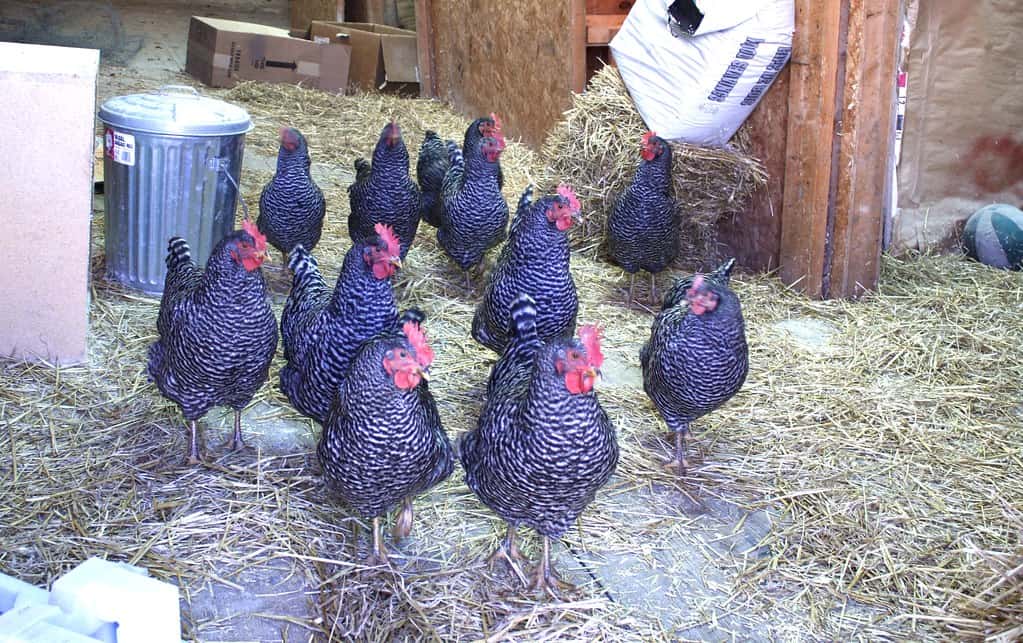
There are no genetic issues to worry about with the Barred Rock chicken. They are a healthy breed that usually gives you a long and happy life. These low-maintenance birds aren’t susceptible to any specific illnesses but, as with any chicken, can develop the likes of vent gleet and vent prolapse.
You should also be on the lookout for parasites. Medicating them for parasites is usually very easy due there are steps you can take to reduce the likelihood. Ensure that the coop is clean and remember to replace their bedding often.
Reasons to Keep Barred Rock Chickens

With all that information, should you keep Barred Rock chickens? Here are some great reasons to do so.
- Egg and Meat Production – Barred Rocks are perfect for human consumption. They excel as both a broiler and an egg layer. For those looking to be self-sustainable, you won’t find a better chicken than the Barred Plymouth Rock.
- Easy to Care For – They are friendly in nature, don’t require specialist feed, are low-cost, and cope well in a variety of climates. That all means they are very easy to care for.
- Friendly – Most people hoping to raise chickens are looking for a friendly and docile breed. Those are two qualities you’ll always get from a Barred Rock.
- Good Foragers – Part of what makes them low-cost is that they are happy to find their own food. If given space to roam, they will happily scratch and peck around to find their next meal.
- Attractive – Those barred black and white feathers make the Barred Rock one of the most distinctive in the world. Due to their popularity, you won’t have any trouble buying your first Barred Rock chick.
Reasons Not to Keep Barred Rock Chickens
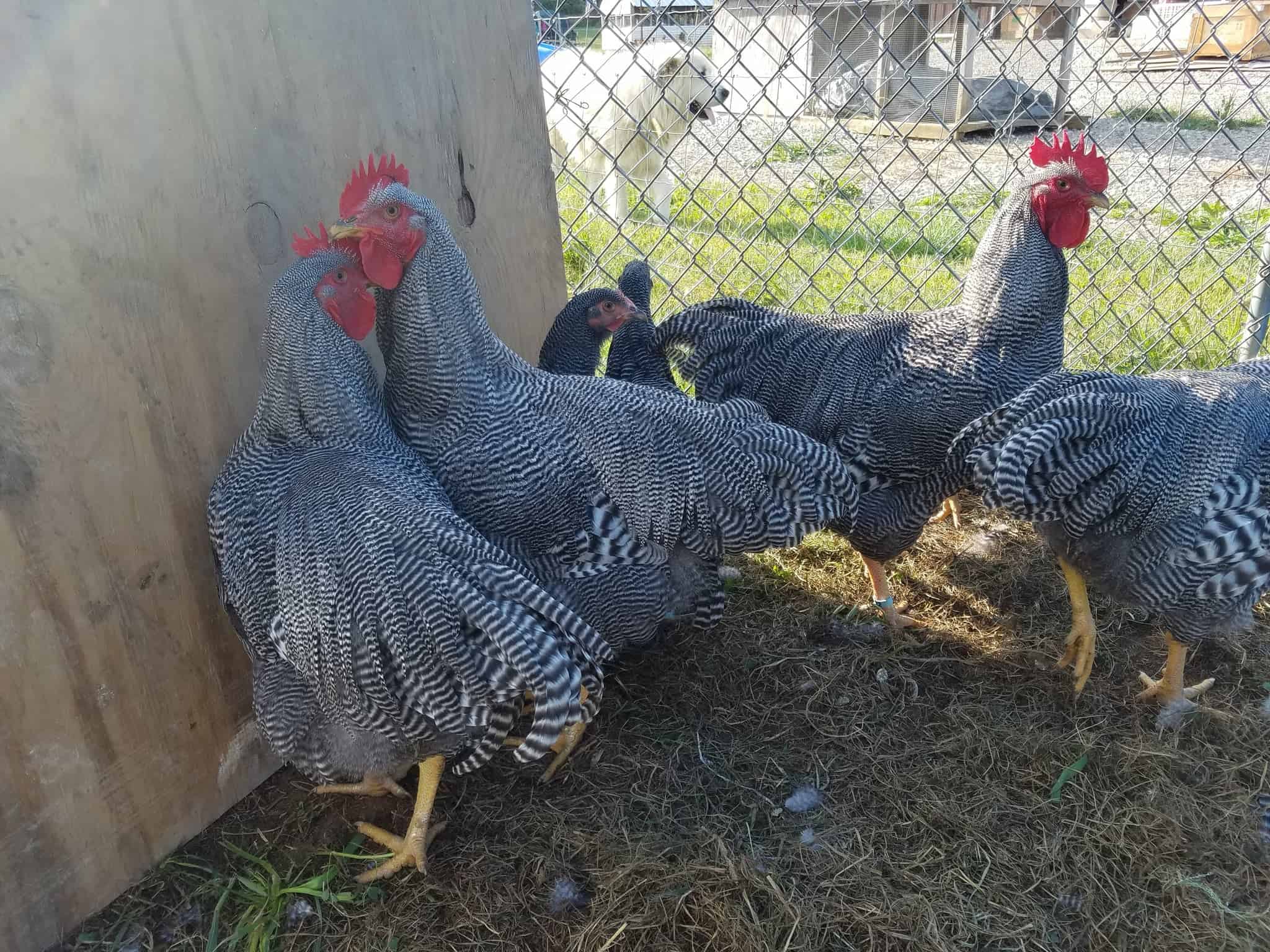
While there are plenty of advantages, it’s also important to mention any downsides. Here are a few of them.
- Egg Production – Why is this a negative? Well, it’s not really, as they are good layers. But we wanted to mention again that if you wanted a chicken solely for egg laying, there are better options out there.
- Bullies – Barred Rocks are generally quite passive, especially to humans. However, they are known to be a little pushy when mixed with other chicken breeds. It’s best not to keep them with small chickens.
- Easy Prey – If you live in an area with lots of natural predators, then Barred Rock can be easy prey. They aren’t good flyers and are quite slow. Make sure they have adequate protection.
Barred Rock Chicken – FAQs
1. Is the Barred Rock the same as a Plymouth Rock?
Yes. The Barred Rock is just the name for a specific color variant of Plymouth Rock.
2. Are Barred Rock chickens good egg layers?
They lay around 200 large eggs per year. That means they are very good layers when compared to the average chicken. However, there are many hybrid breeds out there which will give you over 300 large eggs per year.
3. Are Barred Rock good chickens?
For meeting the needs of humans, they are incredible chickens. They are easy to keep, friendly, good for meat production, and good egg layers. They tick all the boxes on what makes a good chicken.
4. What color eggs do Barred Rock chickens lay?
A Barred Rock lays brown eggs.
5. How many years do Barred Rock chickens lay eggs?
If they live a long life, a Barred Rock can lay eggs for up to ten years. However, they will be most productive in their first three years of life. After that, their production will gradually start to decline.
6. Should chickens be closed in coop at night?
Yes, especially for breeds such as Barred Rock which are easy prey. Even if you have a predator-proof backyard with a large chicken run, sneaky predators can often still find a way in. Not only does keeping the coop closed help keep predators away, but it can also help keep chickens warm in the winter.
Conclusion
The Plymouth Rock is one of the most famous breeds of chickens in the world and by far its most popular color variant is the Barred Rock. If you’re hoping to keep one of these chickens, then we’re not surprised.
Whatever you want from a chicken, whether it’s meat, eggs, or a friendly pet, the Barred Rock delivers. And if you want all three, then even better. For those looking to start their own flock, you’ll never regret getting a Barred Rock.

